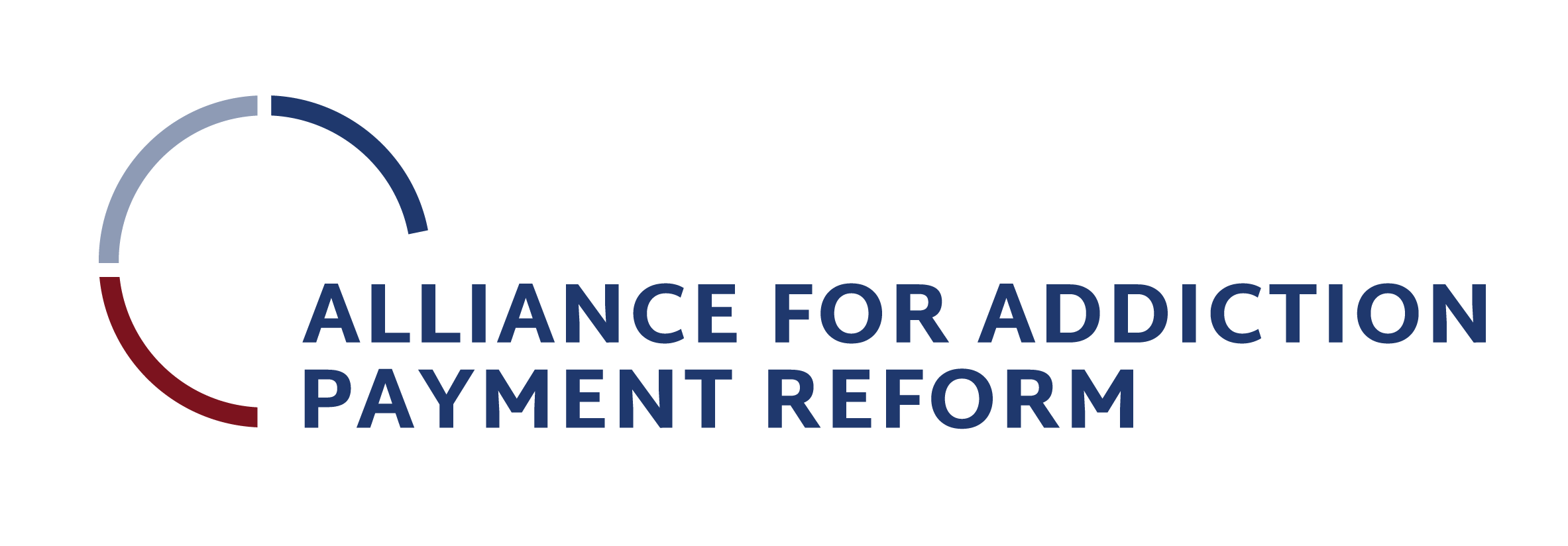Before, during, and after the COVID-19 pandemic, overdoses and alcohol-related deaths have remained the leading and growing cause of death for those under 50.
Substance use disorders (SUDs) have devastating effects on individuals, families, and communities and drive enormous inefficiencies in health care. According to Substance Abuse and Mental Health Services Administration (SAMHSA) 2021 data, an estimated 46.3 million Americans 12 and older (or 16.5 percent) were suffering from a SUD, and only 6.8 percent of those in need received any treatment at a specialty facility in the past year.
Unlike many other chronic health conditions, today’s recovery services are delivered through a system often lacking alignment or integrated economic structures that incentivize long-term recovery. The human and economic cost of this fragmentation and inefficiency is unsustainable.
Founded in 2017, The Alliance for Addiction Payment Reform (Alliance) is a cross-sector learning collaborative that convenes leading health experts and stakeholders to support the design and implementation of alternative payment models SUD. In collaboration with clinical, addiction, information technology, primary care, social, regulatory, and policy experts, the Alliance published the Addiction Recovery Medical Home – Alternative Payment Model (ARMH-APM), a consensus open learning model, in 2018 and companion operational definition in 2019. Since its initial publication, the model and accompanying work have become a core driver behind the components of federal and state Medicaid value-based payment policy along with commercial managed care and self-funded pilot demonstration explorations across the country.
Today, the Alliance is proud to publish an update to the original ARMH-APM framework incorporating learnings from the past four years. The update examines key system challenges exacerbated during the COVID-19 pandemic, such as interoperability, data sharing, and mobile engagement functionality. The update also includes emerging best practices from commercial and Medicaid demonstration explorations, such as payment and data flow examples, early attribution considerations, recommendations for size and scope of pilots, and incorporation of industry impact, such as the opportunity presented by the opioid abatement funding.
Accompanying the 2023 ARMH-APM white paper update is the publication of a free interactive Value Opportunity Calculator to provide payers, employers, providers, and government stakeholders an estimate of the economic opportunity available to them through the deployment of an alternative payment model (APM) for SUD in both commercial and Medicaid populations.
The health system needs a radical shift in how it pays and organizes SUD care and recovery services to improve recovery rates, lower unnecessary costs, and drive broader systemic value through the reduction of other comorbidities that become exasperated when addiction problems are not well managed. The rapid convergence of new data, contracting models, and evidence-based care models are poised to transform the nature of treatment and recovery services for SUD across the country.
Visit IncentivizeRecovery.org to join the free national learning collaborative or test the Value Opportunity Calculator.

